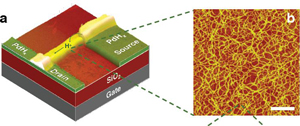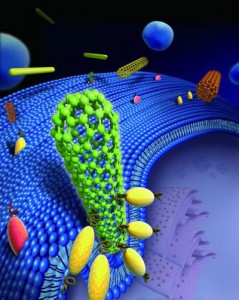It’s been a big couple of weeks for Pixelligent Technologies LLC. Sept. 13, 2011, there was a news item on Nanotechnology Now about Clayton Teague joining their advisory board. From the Sept. 13, 2011 news item,
Dr. Teague is one of the most highly-respected innovators in the field of nanotechnology and we are honored to have him join our esteemed Advisory Board,” commented Craig Bandies, CEO Pixelligent Technologies. “This is a very exciting time for the company as we are poised for tremendous growth, and we will benefit from Dr. Teague’s years of experience and proven leadership.” Dr. Teague joins Dr. Larry Thompson, Dr. Karen Brown, Hal Shear, and Robert Bertin.
…
Dr. Teague acted as Director of the Federal National Nanotechnology Coordination Office (NNCO) from 2003 – 2011. In this position, he reported to the Office of Science and Technology Policy, the office that advises the President and others within the Executive Office of the President on the effects of science and technology on domestic and international affairs. He has also served as Chair of the American National Standards Institute Technical Advisory Group to the ISO Technical Committee on Nanotechnologies (ISO TC 229), acted as president of the American Society for Precision Engineering, is a fellow of the United Kingdom Institute of Physics, and worked as Editor-in-Chief of the international journal Nanotechnology for ten years.
Today, Sept. 23, 2011, a company news release announces new funding and the move to new facilities,
Pixelligent, LLC, an innovator in manufacturing nanocrystal additives for the electronics, industrial and military markets, announced today that it has closed $5.1 million in funding. The round was six times over-subscribed and the board significantly upsized the round to make room for the increased demand.
This round included participation from both new and existing investors. The new investors include the Abell Foundation, WISE LLC, and a Baltimore-based Angel group. An additional $300,000 came from the Baltimore Development Corporation (BDC) and the Maryland Department of Business and Economic Development (DBED), $200,000 and $100,000 respectively. The funds will be used for purchasing production equipment, installing new systems and hiring employees.
…
The funding round comes on the heels of Pixelligent moving into a new 10,500 sq. ft. state-of-the-art pilot manufacturing facility in Baltimore, MD. The new facility will meet Pixelligent’s current production needs, but also offers plenty of room for expansion as the company continues to grow. Pixelligent is actively recruiting for a number of senior manufacturing, sales, and finance roles and a grand opening ceremony is scheduled for early fall.
…
Pixelligent has raised nearly $9M in equity and has been awarded more than $9M in Government grant programs during the past 30 months. The Pixelligent nanocrystal additive technology has commercialization potential in many market areas including, electronics, lubricants, energy, transportation, and building and construction.
I have been to the company website, which doesn’t have a great deal of company information. I found this at the bottom of the news release,
Pixelligent Technologies is a leading supplier of nanocrystal additives for the electronics, industrial and military markets. After over a decade of research development, Pixelligent is the first company to supply commercially available quantities of the highest quality Zirconium and Hafnium nanocrystals for numerous mission critical applications.
Given the current international econ0mic gyrations, it’s nice to see a company raise more money than they expected (according to the news release).

